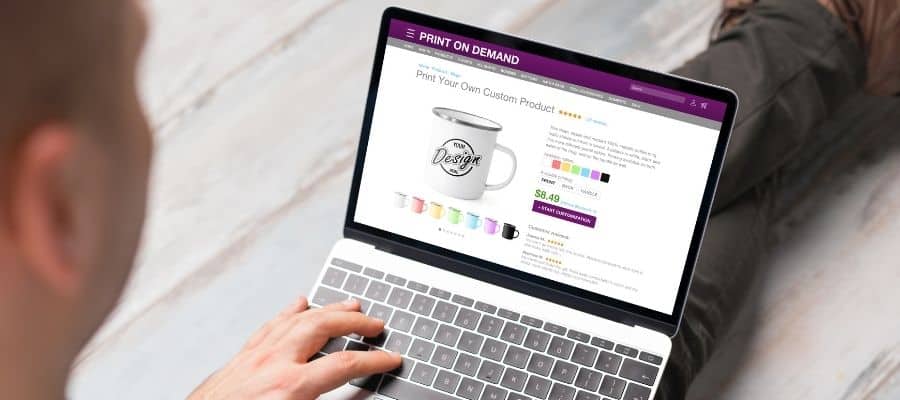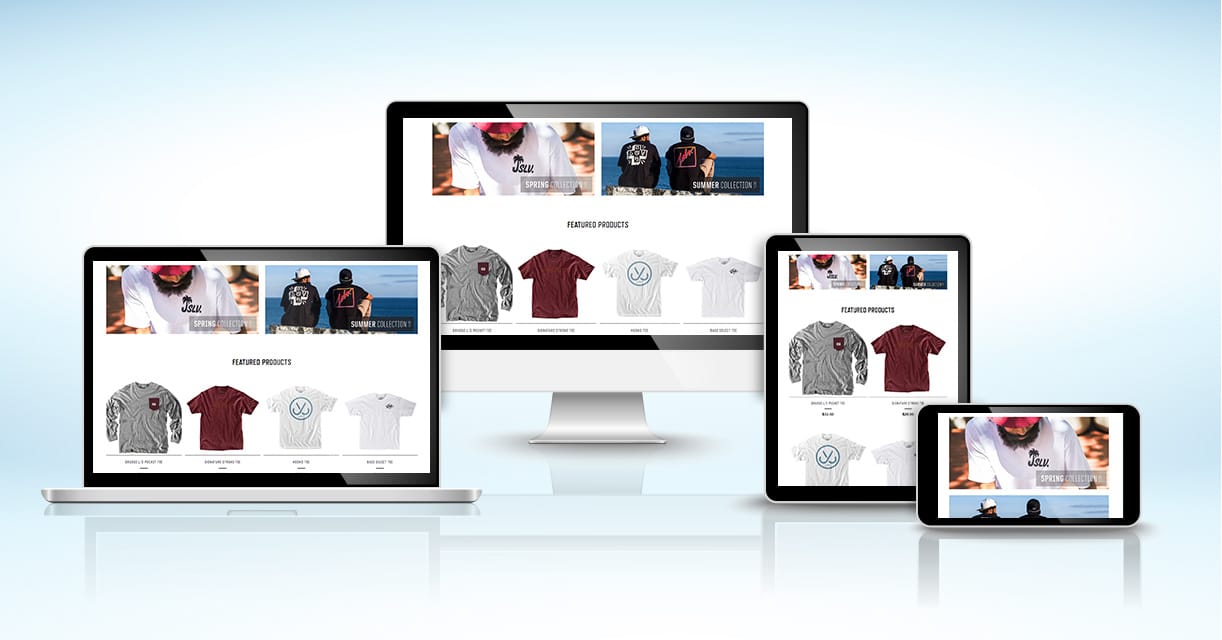5 Essential Elements of a Website for Small Businesses
Having a website is now a necessity for small businesses operating in the digital age. Your website acts as a digital shop, giving you a place to promote your goods and services and establish connections with possible clients. A website is a fluid tool that can and should be adapted to fit the needs of each business or user who requires one. However, there are certain elements that should almost always be present. No matter your focus, if you are a small business, your web presence should contain these design elements, which will ensure that your website is functional, appealing, and successful as an advertising tool.
You must include a few essential components if you want your website to function properly. In order to improve your site’s ranking, we’ll cover the five crucial components of a website for small businesses in this blog post in plain language.
Feature #1: Clear and Engaging Homepage
The homepage of your small business website is your digital storefront, the first impression you make on online visitors. It’s a critical element that needs to be clear, captivating, and user-friendly to entice and retain potential customers. Let’s delve deeper into why a clear and engaging homepage is essential for your small business website:
1. Visual Appeal: The design of your homepage plays a significant role in capturing visitors’ attention. High-quality images, a harmonious color scheme, and a visually pleasing layout create a positive first impression. An eye-catching header and professional branding elements can reinforce your business identity.
2. User-Friendly Navigation: Your homepage should offer simple and intuitive navigation. Ensure that your menu or navigation bar is easily accessible and logically organized. Use broad headings and categorized subheadings to help users quickly find what they’re looking for.
3. Compelling Content: The content on your homepage should be concise, engaging, and provide a snapshot of your business. A well-crafted headline can instantly communicate what your business offers and a brief description in the form of a tagline or a short paragraph can further clarify your value proposition.
4. Visual Elements: Multimedia elements like high-quality images, graphics, and even videos can be integrated into your homepage to make it more engaging. These visuals not only enhance the visual appeal but also serve to break up the text, making the content more digestible and captivating.
5. Clear Call to Action (CTA): Your homepage must guide visitors on what to do next. Include a prominent and persuasive CTA that encourages users to take action, such as “Contact Us,” “Shop Now,” or “Learn More.” The CTA should stand out, both in terms of design and placement.
6. Brand Identity: Your homepage should reflect your brand’s identity, including its personality, values, and mission. This helps visitors connect with your business on a more personal level, which can lead to brand loyalty and trust.
7. Mobile Responsiveness: In today’s mobile-centric world, it’s vital that your homepage is mobile-responsive. This means it adapts to various screen sizes, providing an optimal experience for users on smartphones and tablets.
8. Loading Speed: Users have little patience for slow-loading websites. Your homepage should load quickly to prevent users from bouncing away. You can use tools like Google PageSpeed Insights to identify areas for improvement in terms of loading speed.
9. Consistency: Maintaining consistency with the rest of your website’s pages is crucial. Visitors should easily recognize that they’re on the same website when navigating from the homepage to other sections.
Feature #2: About Us Page
The “About Us” page is a fundamental component of your small business website. It serves as a platform for sharing the story, mission, and values of your business, allowing you to connect with your audience on a more personal level.
1. Business Story: The heart of the “About Us” page is your business’s story. This is where you can narrate the journey of your company, from its inception to its current status. Share the motivations, challenges, and successes that have shaped your business. Your story not only humanizes your brand but also creates a unique connection with your audience.
2. Mission and Values: Clearly articulate your business’s mission and core values. This provides transparency and helps potential customers align themselves with your brand’s purpose. When values resonate with those of your target audience, it fosters trust and loyalty.
3. Team Member Bios: If your business has a team, consider including brief bios of key members. This personal touch introduces the faces behind your brand and showcases the expertise and experience of your team, reinforcing trust and credibility.
4. Visuals and Multimedia: Enhance the “About Us” page with visuals. High-quality images of your team, workspace, or the journey of your business can visually connect visitors to your narrative. You can also incorporate multimedia elements such as videos or slideshows to make the storytelling more engaging.
5. Contact Information: Make sure your contact information is easily accessible on this page. Visitors who are inspired by your story may want to reach out, ask questions, or express interest. A direct means of contact is crucial for conversion.
6. Brand Personality: Infuse your brand’s personality into the page. This might include the tone of writing, the use of humor or seriousness, and the overall design. The “About Us” page should reflect the essence of your brand, allowing visitors to connect with its character.
7. Trust and Transparency: Use the “About Us” page as an opportunity to build trust and transparency. Openly discuss your business practices, ethics, and commitment to customer satisfaction. Transparency can go a long way in establishing trust, which is vital for small businesses.
8. Purposeful Design: The design of your “About Us” page should align with your overall website aesthetic. Consistency in design, color schemes, and typography ensures that visitors feel a seamless transition from the homepage to the “About Us” page.
9. Updates and Milestones: Consider including updates and significant milestones in your business’s journey. This showcases growth and progress and demonstrates your commitment to ongoing development.
Feature #3: Products or Services Page
The “Products or Services” page is the core of your small business website, where you showcase what you offer to your customers. It’s a crucial element because it provides detailed information about your products or services, making it easier for visitors to understand what you provide. Let’s explore in detail why the “Products or Services” page is a vital component of your website:
1. Detailed Catalog: The heart of this page is a comprehensive catalog of your offerings. Organize your products or services into logical categories, making it easy for visitors to navigate and find what they’re interested in. Each item in your catalog should be presented with a detailed description, high-quality images, and, if applicable, pricing information.
2. Descriptive Content: For each product or service, provide informative and engaging content. A well-crafted description should explain the features, benefits, and unique selling points of the item. Use persuasive language that guides visitors towards making a decision.
3. High-Quality Images: Visuals play a critical role in enhancing the appeal of your products or services. Include high-resolution images that showcase the item from multiple angles and, if relevant, in different use cases. The goal is to provide a visual representation that complements the written description.
4. Pricing and Packages: If your business operates on a pricing or package model, clearly display this information. Transparency in pricing is appreciated by potential customers and helps them make informed decisions. Additionally, if there are any special deals or discounts, highlight them prominently.
5. Reviews and Testimonials: Consider incorporating reviews and testimonials from satisfied customers on this page. Positive feedback from previous clients can instil confidence in potential customers and influence their purchase decisions.
6. Contact and Inquiry Options: Provide clear contact or inquiry options for customers who have questions or wish to make a purchase. This can include a direct link to a contact form, a “Request a Quote” button, or a “Buy Now” option, depending on your business model.
7. Interactive Elements: Consider integrating interactive elements such as product customization tools, product comparison tables, or a live chat feature to assist visitors in making informed choices.
8. Multimedia Integration: Where applicable, incorporate multimedia elements like videos that demonstrate the functionality or usage of your products or services. This can help visitors visualize the value of what you offer.
9. Customer Support Information: If you have customer support or service assistance, include relevant contact information and hours of operation. Providing this information reinforces your commitment to customer satisfaction.
10. Responsive Design: Ensure that your “Products or Services” page is mobile-responsive, as many users browse websites on various devices. A responsive design adapts to different screen sizes, providing a seamless experience.
11. Clear Navigation: The navigation from your homepage to the “Products or Services” page should be intuitive and straightforward. Visitors should easily find their way to your offerings with minimal clicks.
Feature #4: Contact Information
The “Contact Information” section is a critical component of your small business website, serving as a direct line of communication between your business and potential customers. It is an essential element because it enables visitors to reach out, inquire about your products or services, or seek assistance.
1. Contact Details: The central aspect of the “Contact Information” section is the provision of contact details. Include a phone number that visitors can call for immediate assistance and an email address for those who prefer written communication. Ensure that this information is prominently displayed and easily accessible.
2. Contact Form: In addition to displaying contact details, offer a contact form on your website. This form allows visitors to send messages directly through your site, providing an easy and convenient way for them to get in touch. Include fields for their name, email address, subject, and message.
3. Physical Address: If your business has a physical location, prominently display your address. This is particularly valuable for businesses with brick-and-mortar stores, as it allows potential customers to locate your establishment with ease. You can also incorporate a map for visual navigation.
4. Business Hours: Inform visitors about your business hours, including opening and closing times. If your customer service hours differ from your regular operating hours, make sure to note both. This information is especially useful for those who plan to visit your physical location.
5. Social Media Links: Include links to your business’s social media profiles. Social media platforms provide another avenue for communication and engagement. Visitors can follow your accounts, stay updated on your latest offerings, and reach out through social channels.
6. Interactive Elements: Enhance the “Contact Information” section with interactive elements such as a live chat feature. Live chat enables real-time communication, allowing visitors to ask questions or seek assistance instantly.
7. Response Time Expectations: Set clear expectations for response times. Let visitors know when they can anticipate a response to their inquiries, whether through phone, email, or the contact form. Quick response times demonstrate your commitment to customer service.
8. Multiple Contact Methods: Offer multiple contact methods to cater to different visitor preferences. Some customers may prefer calling, while others may opt for email or the contact form. Providing various options ensures that you can accommodate various communication styles.
9. Accessibility: Ensure that the “Contact Information” section is easily accessible from any page on your website. Typically, it is placed in a prominent position in the header, footer, or as a dedicated “Contact Us” page accessible from the main navigation menu.
Feature #5: Blog or Content Section
A blog or content section is a dynamic and informative part of your small business website that goes beyond showcasing products or services. It provides valuable content that engages your audience, establishes your expertise, and helps improve your search engine ranking.
1. Information Hub: Your blog or content section serves as an information hub, where you can share relevant and valuable content with your audience. This can include articles, guides, tutorials, news, updates, and any other information that resonates with your target market.
2. Search Engine Visibility: Maintaining a blog can significantly enhance your website’s search engine visibility. Search engines reward websites that regularly publish fresh, high-quality content. Each new blog post provides an opportunity to rank for specific keywords and phrases that potential customers might use in their online searches.
3. Establishing Authority: Through your blog, you can establish your authority and expertise in your industry or niche. By offering well-researched, informative, and engaging content, you position your business as a reliable source of information and a leader in your field.
4. Engaging Your Audience: A well-maintained blog keeps your audience engaged and encourages return visits to your website. Content that educates, entertains, or solves problems for your readers is more likely to be shared and remembered, ultimately increasing brand awareness and customer loyalty.
5. Variety of Content Formats: A blog allows for a variety of content formats, including written articles, videos, infographics, podcasts, and more. This versatility accommodates different learning styles and preferences, making your content more accessible to a broader audience.
6. SEO Benefits: In addition to keyword optimization, blogging provides opportunities to optimize meta tags, headlines, and content structure for search engines. Properly optimized content can help your website rank higher in search results, driving more organic traffic to your site.
7. Consistency: Consistency in content creation is key to a successful blog. Develop and maintain a content calendar to schedule regular posts, ensuring that your audience can anticipate fresh content and stay engaged with your brand.
8. Shareability: Encourage your audience to share your blog content on social media platforms and other online communities. Sharing extends your content’s reach and brings more traffic to your website.
9. Problem Solving: Use your blog to address common problems or questions that your target audience may have. By offering solutions, you position your business as a problem solver, fostering trust and goodwill.
Final Words
Your small business website ought to be more than just an online brochure. It’s an effective marketing technique that can expand your brand’s reach. You can build a website that not only looks fantastic but also performs well in search engine rankings, bringing more prospective clients to your company, by combining these crucial components and using SEO-friendly keywords. So get started on your small company website today and watch it grow.






